
Michael Laurence Nyman, CBE is an English composer, pianist, librettist, musicologist, and filmmaker. He is known for numerous film scores, and his multi-platinum soundtrack album to Jane Campion's The Piano. He has written a number of operas, including The Man Who Mistook His Wife for a Hat; Letters, Riddles and Writs; Noises, Sounds & Sweet Airs; Facing Goya; Man and Boy: Dada; Love Counts; and Sparkie: Cage and Beyond. He has written six concerti, five string quartets, and many other chamber works, many for his Michael Nyman Band. He is also a performing pianist. Nyman prefers to write opera over other forms of music.

Sir John Kenneth Tavener was an English composer, known for his extensive output of choral religious works. Among his best known works are The Lamb (1982), The Protecting Veil (1988), and Song for Athene (1993).

Sir Donald Francis Tovey was a British musical analyst, musicologist, writer on music, composer, conductor and pianist. He had been best known for his Essays in Musical Analysis and his editions of works by Bach and Beethoven, but since the 1990s his compositions have been recorded and performed with increasing frequency. The recordings have mostly been well received by reviewers.
Dmitri Shostakovich's String Quartet No. 8 in C minor, Op. 110, was written in three days.
The Cello Concerto No. 1 in E-flat major, Op. 107, was composed in 1959 by Dmitri Shostakovich. Shostakovich wrote the work for his friend Mstislav Rostropovich, who committed it to memory in four days. He premiered it on October 4, 1959, at the Large Hall of the Leningrad Conservatory with the Leningrad Philharmonic Orchestra conducted by Yevgeny Mravinsky. The first recording was made in two days following the premiere by Rostropovich and the Moscow Philharmonic Orchestra conducted by Aleksandr Gauk.
The Sinfonia Concertante for Violin, Viola and Orchestra in E♭ major, K. 364 (320d), was written by Wolfgang Amadeus Mozart.

Promenade is the third album by Northern Irish chamber pop band the Divine Comedy, released in 1994 on Setanta Records.
The Man Who Mistook His Wife for a Hat is a one-act chamber opera by Michael Nyman to an English-language libretto by Christopher Rawlence, adapted from the case study of the same name by Oliver Sacks by Nyman, Rawlence, and Michael Morris. It was first performed at the Institute of Contemporary Arts, London, on 27 October 1986.

The Holst Singers are an amateur choir based in London, England. The choir is named indirectly after the English composer Gustav Holst, taking its name from the Holst Room at St Paul's Girls' School, the venue for rehearsals during the choir's early years.

The Essential Michael Nyman Band is a studio album featuring a collection of music by Michael Nyman written for the films of Peter Greenaway and newly performed by the Michael Nyman Band. It is the seventeenth album release by Nyman. The album features liner notes by Annette Morreau, who describes the album as "a summation and digest of ten years of progress in the performance of music by a composer -- a composer with whom, so evidently, a group of friends and expert musicians intimately identify their total commitment, virtuosity, and joyous enthusiasm."

Michael Nyman for Yohji Yamamoto is volume 2 of Yohji Yamamoto's series of albums, The Show. The album features the solo violin work Yamamoto Perpetuo, which Nyman has since adapted into the String Quartet No. 4 and the orchestral work, Strong on Oaks, Strong on the Causes of Oaks. The violin is played by Alexander Balanescu, and Nyman can be heard on one track, "Song L," at the piano.
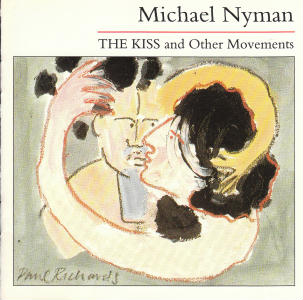
The Kiss and Other Movements is the sixth album release by Michael Nyman, and the fifth recording with the Michael Nyman Band. The title track is an "operatic duet" between Dagmar Krause and Omar Ebrahim, based on a painting of the same title by Paul Richards, which is depicted on the cover, and used in a video art project by Richards of the same name. The album includes music from Peter Greenaway's Making a Splash and 26 Bathrooms, an excerpt of Nyman's unfinished opera, Tristram Shandy, and a concert piece, "Tango Between the Lines".
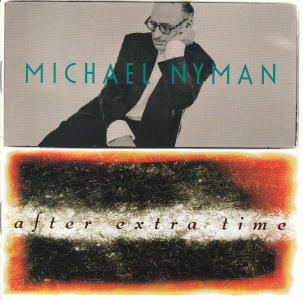
After Extra Time is a 1996 album by Michael Nyman with the Michael Nyman Band containing three tributes to Nyman's fandom of Association football: After Extra Time, the soundtrack to The Final Score, and Memorial. The latter is described as a remix, but is simply the 1992 recording from The Essential Michael Nyman Band. It was included in order to put it together with his two other football-inspired works. The album lists only three tracks, which has caused it to be erroneously reported that Memorial is track 3 and the others are all hidden tracks, but Memorial is track 26. Therefore, a track listing, as the individual portions of the pieces are not named, is not useful. The three pieces were recorded at separate times and thus have separate personnel lists.
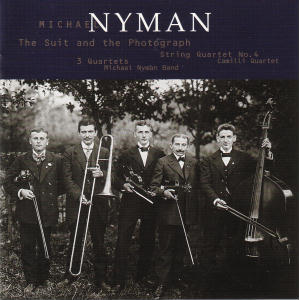
The Suit and the Photograph is a 1998 album by Michael Nyman with the Michael Nyman Band, recorded in 1995. On this album, Nyman is the composer, conductor, and producer, and wrote the liner notes. The album contains two works, String Quartet No. 4 and 3 Quartets. The album is named for its cover photograph by August Sander, which Nyman had associated with the Michael Nyman Band since its inception in 1977. He cites a description of the photograph by John Berger, in an essay of the same title, describing that the suits deform the working class rural men just enough to "undermine physical dignity." Both of the pieces on the album originated in Japan. It is Nyman's second release on EMI and his 33rd in general, but is not designated part of a series, as EMI had done with Concertos. Said Nyman of EMI, "I didn't excite them, and they didn't excite me." Nyman's only further releases on EMI would be the UK edition of Ravenous, featuring remixes by William Orbit, and The Actors, both film scores.
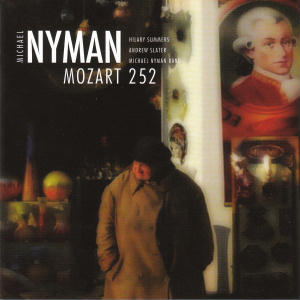
Mozart 252 is a 2008 album by Michael Nyman with the Michael Nyman Band, Hilary Summers, and Andrew Slater, celebrating the 250th anniversary of Wolfgang Amadeus Mozart's birth. Although "Revisiting the Don," one of only two newly written works on the album, was commissioned and performed in 2006, the album's title is a joke on its lateness as an album, released 252 years after Mozart's birth. The album also includes "In Re Don Giovanni," Nyman's first composition for the band, which is based on the first fifteen bars of "Madamina, il catalogo è questo" from Don Giovanni, six selections from Peter Greenaway's film, Drowning by Numbers, in which he was instructed to base the music on the slow movement of Mozart's Sinfonia Concertante K. 364, and two duets and an aria from Nyman's television opera, Letters, Riddles and Writs, in this recording featuring bass Andrew Slater as Leopold Mozart and contralto Hilary Summers as Wolfgang.

The Cook The Thief His Wife & Her Lover is the twelfth album release by Michael Nyman and the ninth to feature the Michael Nyman Band. It is the soundtrack to the eponymous film by Peter Greenaway. The album includes the first commercially released recording of Memorial, and this is the only piece discussed in the liner notes, to the point that the lyric sheet for "Miserere", the song which Pup the kitchen boy sings, is misidentified "Memorial." "Book Depository" is one of Nyman's many waltzes.
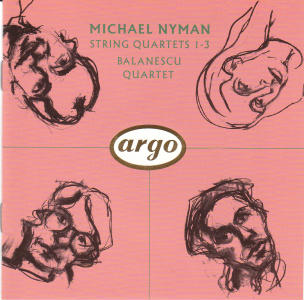
String Quartets 1–3 is a 1991 album by the Balanescu Quartet and the fifteenth release by Michael Nyman. It is the second album of his music on which he did not perform or conduct, though he does provide liner notes. String Quartet No. 3 is built out of Out of the Ruins and became a fixture in numerous Nyman film scores in the 1990s.

The Piano Concerto/MGV is the 23rd album by Michael Nyman, released in 1994. It contains two compositions, The Piano Concerto and MGV. The first is performed by Kathryn Stott and the Royal Liverpool Philharmonic Orchestra conducted by Michael Nyman, and the second is performed by the Michael Nyman Band and Orchestra with Michael Nyman at the piano.
Matthew Barley is an English cellist. He is best known for his performances of core classical music, improvisation, and contemporary music including electronics.
The Chamber Music III, The Nocturnal Dances of Don Juanquixote, Op. 58, is a concertante composition for cello and string orchestra by the Finnish composer Aulis Sallinen, who wrote the piece from 1985–86 on commission of the Naantali Music Festival. The piece was first performed by cellist Arto Noras on 15 June 1986 in Naantali, Finland, with Vladimir Ashkenazy conducting the English Chamber Orchestra. The pseudo-literary title—a compound of iconic, fictional characters Don Juan and Don Quixote —recalls, but does not quote, the Op. 20 and Op. 35 tone poems of Richard Strauss, respectively. The piece is the most popular and recorded of Sallinen's series of nine Chamber Musics.













